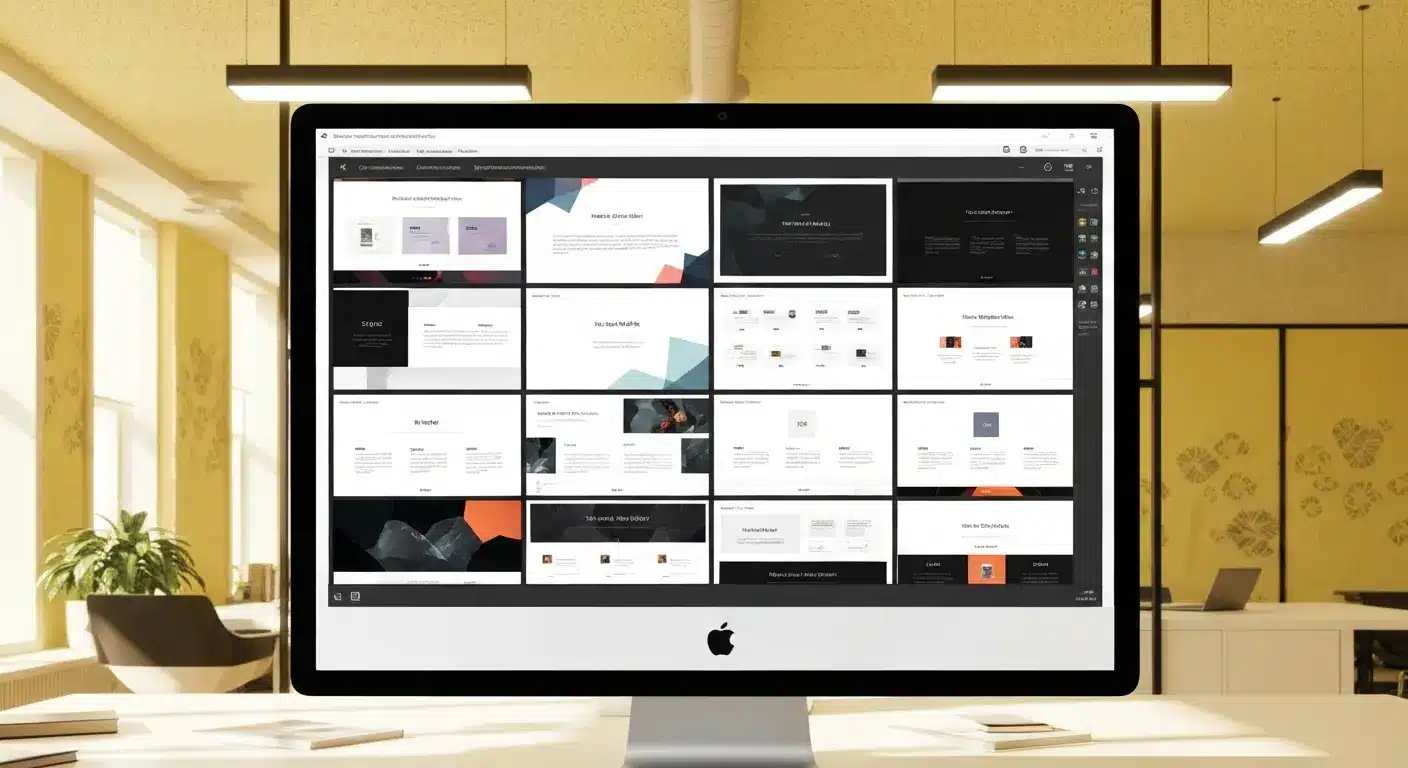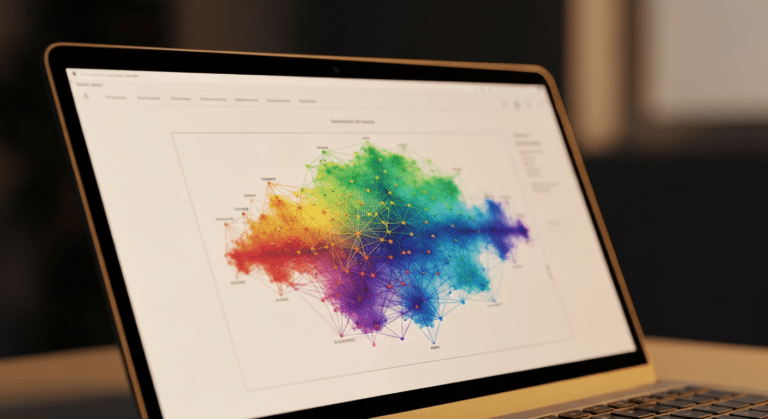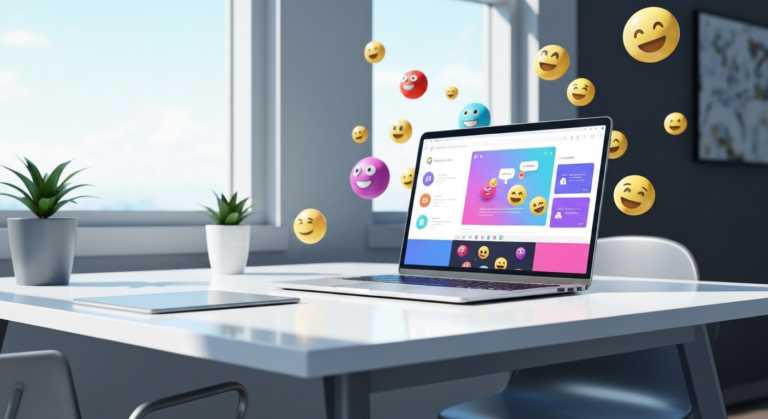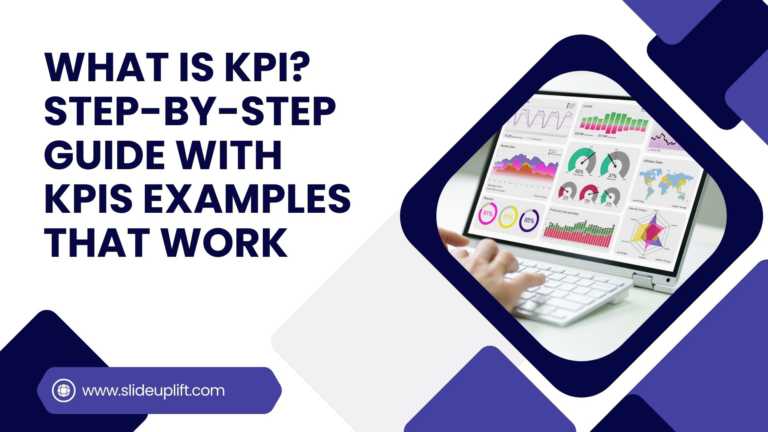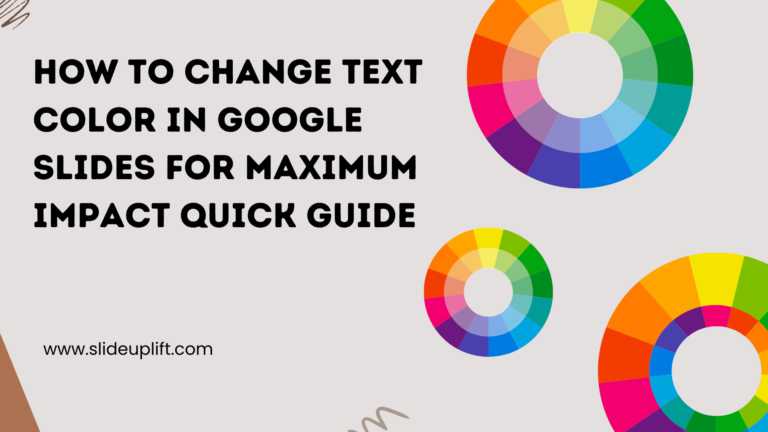The 10 Best PowerPoint Color Palettes You Should Use [+1 Template]
Presentations have evolved over the years, and have now reached a stage where every element that is used can help make an impact or completely disassociate from the audience. To ensure that your presentations are on the former half of the spectrum, make sure that you are using the right PowerPoint color palette in their appropriate scenarios.
Colors are often some of the most overlooked factors of a presentation, with most presenters looking to go with “something that looks nice.” However, colors play a more important role than you may have imagined and deeply impact how your audience will react to your presentation.
The 10 Best PowerPoint Color Palettes
Every presentation needs you to use colors according to the type of presentation it will be. For example, if you are going to pitch a project to investors, you need your colors to be full of energy. Still, in retrospect, if you are presenting in front of a room full of professionals on a topic they know about, you need colors that ooze professionalism and are cool colors!
To help you find a color palette that fits your energy needs, we have created a list of the ten best PowerPoint color palettes with their hex codes!

1. Energizing Presentation Color Palette
Color Code: #4D74FF · #FF5128 · #050007 · #EFFFF

One presentation color palette that you should keep handy when creating any slideshow that requires you to portray energy is the orange, blue, black, and white combo! The orange color helps promote energy and create an upbeat feel to the presentation, while the blue helps keep your audience engaged during a long presentation.
The ice-white and pitch-black color combo also helps keep your text readable and crisp. This scheme is best for when you want to have a pitch meeting.
2. Reliable Color Palette For Presentations
Color Code: #343752 · #90ACC7 · #FAD12B

Blue is one of the most commonly used colors in businesses as it screams out ‘trustworthy and calming, yet it’s so monotone. But, when combined with yellow and a companion darker blue color, you end up creating a reliable PowerPoint color palette that you will keep on going back to when you need a color scheme to fall back on. This color scheme can be used for purposes like branding and marketing.
3. Confident PowerPoint Color Palette
Color Code: #F8275B · #FF574A · #FF737D · #3D2F68

To boost confidence within your audience while presenting, you must use this color scheme that contains the color red!
When using red in presentations, one thing to keep in mind is that red is a very aggressive color when alone; that’s why you should pair it with softer colors, like a softer tone of orange, pink, and Fuschia.
4. Fun Corporate Presentation Color Scheme
Color Code: #3B4D54 · #B9BAB5 · #FE8D3F

All of us can agree that corporate presentations can be a bore, especially when with all the boring gray and dark colors. To create a corporate slideshow that is also fun at the same time, you should add bright colors, like orange, to your gray-tone colored presentation.
The bright color helps add a pop to your presentation and keep it serious, enabling you to keep your audience engaged and attentive!
5. High-End Color Palette For Presentations
Color Code: #5D1D2E · #951233 · #C15937 · #997929

One of the best themes to use for your presentation has to be the vintage color schemes! This 1930s color scheme uses colors such as dark brick red, copper, olive green, and wine red to give your presentation an elegant mood that makes your slideshow look expensive. This color scheme is best suited for luxury goods presentations!
6. Modern Palette For Presentations
Color Code: #5EA8A7 · #277884 · #FE4447

When talking about good color palettes for presentations, the modern color palette is among the first to come to mind. The palette uses bright colors like red over muted colors like dark and light cyan.
The bright color adds a pop to your slides, which helps keep the audience refreshed throughout the presentation. This color scheme is best used to create a presentation that balances business and energy with modernity.
7. Calming Presentation Color Scheme
Color Code: #C5DE82 · #7C3A5F · #FD8C6E · #98ACB5

When creating a calming presentation, one thing to keep in mind is to use colors that help soothe your audience. You can use colors that are found in nature, like spring green, blue-gray, terracotta, and mulberry purple, to help create that soothing effect, as shown below!
This color scheme is best suited for health and mental well-being presentations; it can be used by hospitals and companies present in the health sector.
8. Professional Presentations Color Palette
Color Code: #6B90B2 · #1B558E · #CCD64D

Make your presentation look professional while keeping it refreshing and fresh using this professional color scheme. This palette combines dark and desaturated blue with a lemon-like yellow.
The yellow adds a fresh look to your slides, while the blue colors help keep your presentation looking professional. These colors suit slides requiring you to break important news or build trust with your audience.
While talking about professional slides, if you find it difficult to create visually appealing slides, check out our professional PowerPoint templates that are 100% customizable, enabling you to edit the template according to your requirements.
9. Creative PowerPoint Color Schemes
Color Code: #02AA9D · #3187DE · #FE951C · #FF88AC

Add a bit of creativity to your presentations with the help of bright colors that help catch your attention and invoke the feeling of experimentation. It creates a fun and creative color palette when combined with tropical colors.
Bright colors, like orange and pink, help bring a warm tone to your presentation, while tropical colors, like viridian green and blue, help keep your presentation creative! This color scheme is best suited for brainstorming sessions.
10. Warm Presentation Color Palette
Color Code: #A49393 · #EED6D3 · #E8B4B8

Last but not least, we have the warm color scheme on our list of the best presentation color schemes! Best suited for cosmetics and fashion sector presentations, this palette uses warm neutral colors, like different light and dark tones of red. Using neutral colors allows your slides to be versatile and can be paired up with almost anything, and warm neutral colors help keep your presentation looking sophisticated and warm.
These were some of the best color schemes that you should use for your next presentation. It’s finally time to say goodbye to plain slideshows and wow your audience with the perfect color palette. If you are trying to experiment with the color palettes, check our blog on the one color never to use in presentations to ensure you are doing everything correctly when creating your own scheme.
Take a loot at our presentation design services if you need help designing your presentation. Our team of design experts helps create and tailor slides according to your needs, enabling you to focus on things that matter, like the content and speech delivery. Here are some more examples of well-designed PowerPoint slides.
SlideUpLift’s Collection Of Professional PowerPoint Templates

FAQs
-
What is the best color scheme for PowerPoint?
The best color scheme for PowerPoints ensures readability, maintains a professional look, and complements the content of your presentation. A balanced color scheme combines neutral backgrounds (like white or light gray) with contrasting text and accent colors. Blue and green tones are often favored for their professional and calming effects, while red can be used sparingly for emphasis.
-
What is the 60-30-10 color rule in PowerPoint?
The 60-30-10 color rule is a classic design principle that helps create visually appealing and well-balanced presentations. It dictates that you should use:
1. 60% of a dominant color: This is usually the background color and sets the overall tone of the presentation.
2. 30% of a secondary color contrasts with the dominant color and is often used for elements like charts, graphs, or images.
3. 10% of an accent color: This is used sparingly to highlight important points or call-to-action elements. The accent color should stand out against the other two colors to draw attention where needed.
-
What are the best color palettes for PowerPoint presentations?
- Universal Professional Palettes
-
-
- Corporate Trust
- Colors: Navy Blue + Light Gray + White
- Why: Timeless, trustworthy (used by IBM, banks)
- Best for: Board decks, financial reports
- Colors: Teal + Charcoal + Soft Gold
- Why: Fresh but serious (tech/startup-friendly)
- Best for: Pitches, marketing proposals
- Colors: Dark Gray + White + Coral
- Why: Accessible, focuses attention
- Best for: Data-heavy slides, training
- Corporate Trust
-
- Industry-Specific Palettes
-
- Healthcare: Royal Blue + Silver + Mint Green
(Calm, authoritative) - Education: Burgundy + Cream + Forest Green
(Traditional, focused) - Creative Fields: Deep Plum + Stone Gray + Mustard
(Innovative but polished)
- Healthcare: Royal Blue + Silver + Mint Green
-
- What to Avoid
- Neon colors (distracting/unprofessional)
- More than one bright color (competes for attention)
- Pure black backgrounds (harsh on the eyes)
-
How do I choose the right color Slideshows?
Select colors that reinforce your message and brand while ensuring clarity:
-
- Anchor to your brand: Use your organization’s existing colors for instant recognition and professionalism.
- Leverage color psychology
- Blue: Trust, stability (ideal for corporate/financial topics.
- Green: Growth, balance (suits environmental or strategic content)
- Neutrals (Gray/Beige): Neutrality, sophistication
- Accent colors (Red/Yellow): Sparingly, for urgency or key highlights
- Align with your topic’s tone
- Serious subjects → Muted palettes (navy, charcoal, ivory
- Creative/energetic themes → Bold base + clean neutrals
- Limit your palette
- 1 primary + 1-2 accents + 1 neutral
- Avoid clashing combinations.
- Prioritize readability
- Ensure strong contrast (e.g., dark text on light backgrounds)
- Test visibility: View slides from 10 feet away.
-
-
How do color palettes affect audience perception?
Color palettes silently shape how your audience feels, focuses, and remembers your message.
- Emotional Priming
- Blue: Triggers trust → ideal for financial/medical talks
Example: IBM, Pfizer - Red: Creates urgency → use sparingly for calls-to-action
Study: Red boosts attention by 24% (Journal of Marketing) - Green: Signals growth → sustainability/innovation themes
- Blue: Triggers trust → ideal for financial/medical talks
- Cognitive Impact
-
- High contrast (dark text/light bg): Improves readability + retention by up to 40% (W3C)
- Clashing colors: Increases cognitive load → audience disengages
- Cultural & Contextual Cues
- Corporate: Navy/gray = authority (used in 78% of Fortune 500 decks)
- Startups: Teal/orange = innovation (Airbnb, Slack)
- Avoid: Red in Japan (danger) vs. China (luck)
- Brand Association
- Consistent palettes:
- Boost brand recall by 80% (Lucidpress)
- Signal professionalism (e.g., McKinsey’s cobalt blue)
- Consistent palettes:
- Emotional Priming
-
Are there free PowerPoint templates with color palettes?
Yes, SlideUpLift offers free PowerPoint templates with professional color palettes every Friday.
- Key Details:
- Weekly Releases: A New free template is added every Friday.
- Professional Palettes: Each includes a tested, modern color scheme (e.g., Navy/Teal, Charcoal/Gold).
- No Cost/No Strings: Download instantly without email signup.
- Fully Editable: Customize colors, text, and layouts in PowerPoint or Google Slides.
- Key Details:
-
How many colors should I use in a PowerPoint presentation?
Tips for Choosing and Using a Color Palette in Presentations:
- Use 3–4 colors max to maintain visual harmony and a professional look.
- Follow the 60-30-10 rule:
- 60% dominant color (e.g., background)
- 30% secondary color (e.g., headings or subheadings)
- 10% accent color (e.g., key data points or icons)
- Create a visual hierarchy to guide the viewer’s attention effectively.
- Ensure readability by using high contrast (e.g., dark text on light backgrounds).
- Stick to brand colors to support brand recognition and consistency.
- Avoid using more than four colors, as it can lead to visual clutter and reduce credibility.
-
What’s the difference between theme colors and standard colors in PowerPoint?
Here’s a clear comparison of Theme Colors vs. Standard Colors in PowerPoint, optimized for quick understanding:
Feature Theme Colors Standard Colors Definition A dynamic set of 12 coordinated slots (4 text/background, six accents, two links) tied to the template Static palette of 20 fixed colors (e.g., red, blue, yellow) Behavior Global updates — changing one color updates all linked elements Local only — changes apply only to selected objects Customization Fully editable with HEX/RGB; save as a .thmx theme file Fixed palette; limited to color selection only Best For - Brand consistency
- Multi-slide projects
- Reusable templates
- One-time edits
- Quick color overrides
Access Location Design tab → Variants → Colors → Customize Colors Shape Format/Text Fill → Color dropdown → Standard Colors Key Advantage Change one color to update the entire presentation instantly Easy access for quick, one-off changes -
Do color palettes work across all PowerPoint versions?
Color Palette Compatibility: Key Facts
Version Theme Colors Custom Palettes HEX/RGB Support Cloud Sync PowerPoint 365 Full Full Full Real-time PowerPoint 2019 Full Full Full Local only PowerPoint 2016 Full Full Limited Local only PowerPoint 2013 Full Basic Not supported No Mac (All Versions) Full Full 2021+ only 365 only





